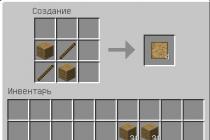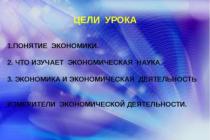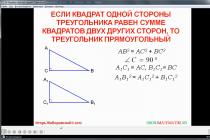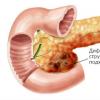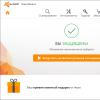Traffic report Money(form 4) is submitted once a year as part of the annual accounting. It shows all receipts and all payments, as well as cash balances at the beginning and end of the period. All organizations need to submit a report, except for those who have the right to keep simplified records.
What is ODDS used for?
The cash flow statement (ODDS) is part of the financial statements. It must be submitted at the end of the year. Organizations that present simplified accounting have the right to refuse it:
- small businesses;
- non-profit organizations;
- participants of the Skolkovo project.
ODDS are, in fact, explanations for line 1250 “Cash and cash equivalents” of the balance sheet. It discloses information about payments and receipts of cash and cash equivalents (for example, bank deposits on demand or promissory notes with a maturity of up to three months), as well as on the balances of money at the beginning and end of the period.
ATTENTION. When compiling the ODDS, cash flows that change the composition, but not the total amount of cash, are not taken into account. This is the receipt of cash from a bank account, transfer from one account to another, and so on.
Structure and content of the cash flow statement
The form of the report is approved by the order of the Ministry of Finance. The rules for drawing up are established by the “Cash Flow Statement”.
The report has three sections.
The first reflects cash flows from current operations. These are revenues and payments for the ordinary activities of the organization. Based on the results of such operations, as a rule, profit (loss) from sales is formed.
The second reflects cash flows from investment operations. These include the purchase and sale of vehicles, equipment, etc. Another example is financial investments other than the purchase of cash equivalents and investments held for resale in the short term.
The third section shows flows from financial transactions. These are the contributions of the founders, proceeds from the issue of shares, bank loans, and so on.
Rules and requirements for filling out a cash flow statement
- Proceeds from the sale of goods, fixed assets and other things are shown without VAT. Payments to suppliers and contractors are also reflected without VAT.
- VAT and excises are indicated separately, in a rolled up form, as part of cash flows from current operations. All VAT (excises) presented to buyers is taken and compared with the sum of all input VAT (excises). If the presented tax is more than the input tax, the difference is shown on line 4119 "Other income". If less, then line 4129 "Other payments".
- The issued salary (including personal income tax) and paid insurance premiums are reflected in line 4122 “In connection with the remuneration of employees”.
- Income tax is shown separately on line 4124 "Corporate income tax". The remaining taxes (except for VAT, excises and personal income tax) are summarized and reflected on a line specially introduced for this - for example, 4125 “Other taxes and fees”.
Example and procedure for filling out ODDS
As of December 31 of the previous year, Rusalka LLC had balances: on account 50 "Cash" - 10,000 rubles, on account 51 "Settlement accounts" - 50,000 rubles.
Cash flows from current operations
In the reporting year, the Rusalka account received proceeds from the sale of goods in the amount of 1,200,000 rubles (including 20% VAT - 200,000 rubles). The company transferred 840,000 rubles to suppliers. (including VAT 20% - 140,000 rubles), made payments in connection with the wages of employees in the amount of 250,000 rubles. and transferred 98,000 rubles. taxes (including income tax - 50,000 rubles).
The ODDS lines reflect:
- 4110 "Receipts - total" 1,060 thousand rubles (1,000 + 60)
including:
- 4111 "From the sale of products, goods, works and services" 1,000 thousand rubles (1,200 - 200)
- 4119 "Other receipts" 60 thousand rubles. (200 - 140)
- 4120 "Payments - total" 1,048 thousand rubles (700 + 250 + 50 + 48)
including:
- 4121 "Suppliers (contractors) for raw materials, materials, services" 700 thousand rubles (840 - 140)
- 4122 "In connection with the remuneration of employees" 250 thousand rubles.
- 4124 "Corporate income tax" 50 thousand rubles.
- 4125 "Other taxes and fees" 48 thousand rubles (98 - 50)
- 4100 "Balance of cash flows from current operations" 12 thousand rubles (1060 - 1048)
Fill in and submit the balance sheet in the current form to the Federal Tax Service and Rosstat
Cash flows from investment operations
Rusalka sold shares issued by another organization in the amount of 500,000 rubles. and issued a long-term loan to a third-party company in the amount of 300,000 rubles.
The ODDS lines reflect:
- 4210 "Receipts - total" 500 thousand rubles.
including:
- 4212 "From the sale of shares of other organizations (participation interests)" 500 thousand rubles.
- 4220 "Payments - total" 300 thousand rubles.
including:
- 4223 “In connection with the acquisition of debt valuable papers(rights to claim funds to other persons), granting loans to other persons” 300 thousand rubles.
- 4200 "Balance of cash flows from investment operations" 200 thousand rubles (500 - 300)
Cash flows from financial transactions
"Mermaid" took a bank loan in the amount of 400,000 rubles. and returned part of it in the amount of 150,000 rubles.
The ODDS lines reflect:
- 4310 "Receipts - total" 400 thousand rubles.
including:
- 4311 "Obtaining credits and loans" 400 thousand rubles.
- 4320 "Payments - total" 150 thousand rubles.
including:
- 4323 “In connection with the redemption (repurchase) of bills of exchange and other debt securities, the return of loans and borrowings” 150 thousand rubles.
- 4300 "Balance of cash flows from financial transactions" 250 thousand rubles (400 - 150)
Final indicators
- 4400 "Balance of cash flows for the reporting period" 462 thousand rubles (12+200+250)
- 4450 "Balance of cash and cash equivalents at the beginning of the reporting period" 60 thousand rubles (10 + 50)
- 4500 "Balance of cash and cash equivalents at the end of the reporting period" 522 thousand rubles. (462+60)
IMPORTANT. The OKUD code changes in the cash flow statement form. The previous value is 0710004, the new one is 0710005. The changes were made by order of the Ministry of Finance, they are applied from the reporting for 2019.
The cash flow statement reflects all receipts and payments of the organization, as well as the balance of funds at the beginning and end of the reporting period (clause 6 PBU 23/2011). The standard form of such a report was approved by order of the Ministry of Finance of Russia dated July 2, 2010 No. 66n. It must be completed only at the end of the year and submitted as part of the annual financial statements.
Who is required to make
All organizations that maintain accounting must prepare a cash flow statement. There are exceptions to this rule.
Organizations that have the right to use simplified forms may not submit such a report. accounting and reporting. For example, this small businesses (Parts 4–5 of Article 6 of the Law of December 6, 2011 No. 402-FZ, paragraph 6 of the order of the Ministry of Finance of Russia of July 2, 2010 No. 66n).
The cash flow statement provides data on three types of activities: current, investment and financial. Of course, if there is something to reflect. For each such type of activity, the report has its own section:
- "Cash flows from current operations";
- "Cash flows from investment operations";
- "Cash flows from financial transactions".
Cash flows are nothing but payments to an organization and receipts of cash, as well as cash equivalents (clause 6 PBU 23/2011).
However, those payments and receipts that do not affect the total amount of cash and cash equivalents do not need to be included in the report. Even if they change the composition of such indicators. In particular, it is not necessary to reflect in the report:
- payments related to the investment of funds in cash equivalents;
- cash receipts from the repayment of cash equivalents (except for accrued interest);
- foreign exchange transactions (except for losses or gains from the transaction);
- exchange of one cash equivalents for other cash equivalents (except for losses or gains from the transaction);
- other similar payments and receipts (for example, receiving cash from a bank account, depositing cash with a bank, transferring from one account of an organization to another, crediting funds to letters of credit).
This follows from paragraph 6 of PBU 23/2011.
For each group of cash flows, determine how much cash came in and how much decreased, as well as the result of such receipts and expenditures for the reporting period. If it is not possible to unambiguously classify the cash flow, refer it to the group of cash flows from current operations. This is established by paragraphs 12 and 13 of PBU 23/2011.
Determine the balances of funds at the beginning and end of the reporting period (i.e. year) for the whole organization, taking into account branches and representative offices. Reflect the indicators of the reporting year in comparison with similar data for the previous year.
Filling order
The rules for filling out the cash flow statement are prescribed in PBU 23/2011, approved by order of the Ministry of Finance of Russia dated February 2, 2011 No. 11n. But they must be followed only if you are preparing the form for submission to the tax office as part of the annual financial statements.
In other cases (in particular, when you fill out a report for the founders, Rosstat or for a bank), it is not necessary to strictly follow the rules of PBU 23/2011. It is enough to comply with the general requirements for the formation of financial statements, which are prescribed in PBU 4/99.
Line numbering (codes)
The standard form of the cash flow statement does not include line numbering. The codes can be put down independently, taking them from Appendix 4 to the order of the Ministry of Finance of Russia dated July 2, 2010 No. 66n. This must be done when the organization submits reports to the statistics department and other regulatory agencies. For example, the line "Receipts - total" in the section "Cash flows from current operations" corresponds to the code 4110.
If you are reporting only for shareholders or for other users who are not representatives of state control, then the lines of the cash flow statement do not need to be numbered. This follows from paragraph 5 of the order of the Ministry of Finance of Russia dated July 2, 2010 No. 66n.
Negative indicators
Report indicators that have a negative value, reflect in parentheses without a minus sign. Do the same if the indicator needs to be subtracted when calculating the totals. This is stated in note 7 to the balance sheet, approved by order of the Ministry of Finance of Russia dated July 2, 2010 No. 66n.
Currency
Fill out the report in thousands or millions of rubles, without decimal places. If an organization conducts cash transactions in foreign currency, then, as a general rule, such amounts of payments or receipts must be converted into the ruble equivalent. To do this, convert the foreign currency into rubles at the official exchange rate on the date of payment. When the organization has a lot of homogeneous operations in foreign currency, and the official exchange rate of this currency has changed insignificantly, the average rate for the month (or for a shorter period) can also be used for recalculation. Such rules are specified in paragraph 6 of PBU 3/2006.
For example, in November 2015, due to a large number of transactions for the purchase of homogeneous materials, the organization translated cash at the average US dollar exchange rate. The exchange rate of the US dollar in November 2015 changed insignificantly. To determine the average rate, you need to add up all the US dollar rates for each day from November 1 to November 30 and divide the resulting amount by 30 (number of days).
The difference resulting from the recalculation of the organization's cash flows and cash balances in foreign currency at rates for different dates, reflect in the report separately from current, investment and financial flows. Show this as the impact of a change in the foreign exchange rate against the ruble on line 4490 of the Cash Flow Statement.
If the organization changed foreign currency immediately to rubles, then reflect the cash flow in the report in rubles. There is no need to do an intermediate conversion of the currency into rubles. Apply a similar rule in a situation where an organization has acquired foreign currency for rubles shortly before making the corresponding payment.
Such rules are established by paragraphs 18, 19 of PBU 23/2011.
Collapsed figures
In some cases, cash flows need to be shown in the report as a net. In particular, when they characterize not so much the activities of the organization itself as the activities of its counterparties, and (or) when income from some is associated with payments to others. For example, collapsed reflect:
- cash flows of a commission agent or agent related to the provision of commission or agency services (excluding fees for the services themselves);
- indirect taxes (VAT and excises) as part of receipts from buyers and customers of payments to suppliers and contractors and payments to the Russian budget or reimbursement from it;
- receipts from the counterparty in respect of reimbursement of utility bills and these payments themselves in rental and other similar relations;
- payment for the transportation of goods with the receipt of equal compensation from the counterparty.
This is stated in paragraph 16 of PBU 23/2011.
In particular, when showing VAT in the cash flow statement, indicate the difference between the amounts of tax received from partners as receipts (and also from the budget) and the amounts of tax transferred to counterparties as part of payments (and also to the budget).
Thus, VAT amounts can be reflected in the cash flow statement in the lines:
- 4119 “Other receipts”, if in the reporting year the amount of VAT transferred to suppliers, contractors and to the budget is less than that received from buyers, customers and from the budget;
- 4129 “Other payments”, if in the reporting year the amount of VAT transferred to suppliers, contractors and to the budget exceeds that received from buyers, customers and from the budget.
When determining the indicators of these lines, also take into account the amounts of VAT paid (received) in connection with investment and financial transactions (subparagraph “b”, paragraph 16, paragraph 12 of PBU 23/2011).
Similar conclusions follow from the letter of the Ministry of Finance of Russia dated January 27, 2012 No. 07-02-18/01.
How to generate indicators
To fill out the report, take the data of debit and credit turnovers on accounts 50 "Cashier", 51 "Settlement account", 52 "Currency accounts", 55 "Special accounts in banks", 57 "Transfers on the way". For more information on how cash flow statements are generated, see table.
An example of how to determine the result of cash flows from current activities
In 2015, the amount of revenue (including advances) received on the current account and cash desk of Alfa LLC amounted to 11,800,000 rubles. (including VAT - 1,800,000 rubles). For the same period, the organization transferred from the current account payment for the delivered goods (works, services) in the amount of 5,900,000 rubles. (including VAT - 900,000 rubles).
The salary actually paid to employees in 2015 amounted to RUB 2,000,000.
The amount of funds allocated for other expenses is 100,000 rubles. Income tax - 500,000 rubles, VAT - 700,000 rubles, insurance contributions to extra-budgetary funds - 680,000 rubles are transferred to the budget.
Thus, the difference between the amounts of VAT received from partners as part of revenues (as well as from the budget) and the amounts of tax transferred to counterparties as part of payments (as well as to the budget) amounted to 200,000 rubles. (1,800,000 rubles - 900,000 rubles - 700,000 rubles). This amount is indicated on the line "Other income".
On the line “Other payments”, the accountant indicated the amount of 780,000 rubles, which is added up:
- from funds allocated for other expenses (100,000 rubles);
- from insurance premiums to off-budget funds (680,000 rubles).
The statement of cash flows for 2015 in terms of the formation of the section "Cash flows from current operations" accountant "Alpha" was as follows (thousand rubles).
|
Title of report articles |
Row codes |
For 2015 |
|
Income - total |
||
|
including: |
||
|
from lease payments, license payments, royalties, commissions and other similar payments |
||
|
from the resale of financial investments |
||
|
other supply |
||
|
Payments - total |
||
|
including: |
||
|
in connection with the remuneration of employees |
||
|
interest on debt obligations |
||
|
corporate income tax |
||
|
other payments |
||
|
Balance of cash flows from current operations |
An example of how to determine the result of cash flows from investing activities
In 2015, Alfa LLC paid for the acquired premises worth 5,000,000 rubles. In the same year, Alpha provided another organization with a cash loan in the amount of 400,000 rubles.
Alfa LLC had no income from investment activities.
In the section “Cash flows from investment operations” of the cash flow statement for 2015, the accountant of Alfa indicated (thousand rubles):
- line 4221 “Including in connection with the acquisition, creation, modernization, reconstruction and preparation for the use of non-current assets” - (5000);
- on line 4223 “In connection with the acquisition of debt securities (the rights to claim funds from other persons), the provision of loans to other persons” - (400);
- on line 4220 "Payments - total" - (5400);
- line 4200 "Balance of cash flows from investment operations" - (5400).
An example of how to determine the result of cash flows from financial activities
In 2015, Alfa LLC repaid the previously received interest-free cash loan in the amount of 500,000 rubles.
Alfa LLC had no income from financial activities.
In the section “Cash flows from financial operations” of the cash flow statement for 2015, the accountant of Alfa indicated (thousand rubles):
- on line 4323 “In connection with the redemption (repurchase) of promissory notes and other securities, the return of credits and loans” - (500);
- on line 4320 "Payments - total" - (500);
- line 4300 “Balance of cash flows from financial transactions” - (500).
Situation: whether it is necessary to include the balance of account 57 “Transfers in transit” in the amount of the indicator “Balance of cash and cash equivalents at the beginning (end) of the reporting period” of the cash flow statement?
Yes need.
In general, on account 57 "Transfers on the way" take into account the funds transferred (transferred) for crediting to the organization's current account, but not yet credited for the intended purpose. And these are the assets (money) that, in fact, are already the property of the organization. The balance of account 57 at the beginning and end of the reporting year is reflected in the balance sheet in line 1250 “Cash”. In this case, the cash balances reflected in the report should correspond indicators of the balance sheet (see. ). Thus, include the balance of account 57 in the report in the amount of cash balances at the beginning and end of the reporting year.
The relationship of indicators with the balance
Cash flows from current operations
On lines 4110–4100, reflect the cash flows from current operations. They are usually associated with the formation of profit (loss) from sales (clause 9 PBU 23/2011).
Including line 4110, indicate the total amount of cash receipts from current operations. It can be determined by adding up the indicators of lines 4111–4119.
On line 4111, provide the amount of proceeds from the sale of products and the amount of advances from buyers, net of VAT and excises.
On line 4119, reflect other income, for example:
- amounts returned to the cash desk by accountable persons;
- amounts received from the perpetrators or from the insurer as compensation for damage;
- received fines, penalties, forfeits for violations of the terms of contracts.
On line 4120, enter the total amount of payments for current operations. It includes payment of raw materials to suppliers, interest on debt obligations, remuneration of employees, paid income tax and other payments. Row 4120 can be determined by adding the values of rows 4121-4129. Please indicate all payments in parentheses.
On line 4100, reflect the balance of cash flows from current operations. You can determine it by subtracting the indicators of line 4120 from the indicators of line 4110.
Cash flows from investment operations
On line 4210, reflect the amount of cash and cash equivalents received from investment operations. You can determine it by adding up the indicators of lines 4211–4219.
On line 4211, indicate the amounts that the organization received from the sale of fixed assets, intangible assets, capital construction in progress and equipment for installation, excluding VAT.
On line 4220, reflect the total amount of payments for investment activities. Determine it by adding up the indicators of lines 4221-4229.
On line 4221, reflect the payment in the reporting year of fixed assets, intangible assets and construction in progress, excluding VAT.
On line 4200, reflect the balance of cash flows from investment operations. You can determine it by subtracting the indicators of line 4220 from the indicators of line 4210.
Cash flows from financial transactions
On line 4310, reflect the total receipts from financial transactions. They can be obtained by adding the indicators of lines 4311–4319.
On line 4311, indicate the amount of loans and borrowings received from banks and other organizations, excluding interest.
In lines 4312 and 4313, reflect the contributions of the company's owners made in the reporting year.
On line 4320, reflect the total amount of payments for financial activities. It can be obtained by adding the indicators of lines 4321–4329.
On line 4321, in parentheses, reflect the amount of loans and credits that were repaid by the organization in the reporting year.
On line 4322, enter the amount of dividends that were paid to the founders.
On line 4300, reflect the balance of cash flows from financial transactions. It can be obtained by subtracting the indicators of line 4320 from the indicators of line 4310.
On line 4400, indicate the balance of cash flows. You will get it by adding the indicators of lines 4100, 4200 and 4300.
On line 4450, indicate the balance of cash and cash equivalents at the beginning of the year. The composition of this value is disclosed in the explanatory notes to the financial statements.
The composition of cash and cash equivalents at the beginning of the reporting year is disclosed by the organization in the explanations (paragraph 22 of PBU 23/2011).
On line 4500, indicate the balance of cash and cash equivalents at the end of the reporting period. You can determine it if you add the turnover for the year and changes in the foreign exchange rate to the balance at the beginning of the year (line 4400 + line 4450 + line 4490).
On line 4490, reflect the difference that arose when recalculating cash flows and cash balances in foreign currency at rates for different dates (paragraph 19 of PBU 23/2011). If negative exchange rate differences exceed positive ones, then show the resulting difference in parentheses.
The annual financial statements include a cash flow statement. This document contains important financial information, so it must be filled out very responsibly. How to prepare a cash flow statement? Which organizations should submit it to the Federal Tax Service? How to analyze a report? The answers to these and other questions can be found in the article.
Report Feature
Cash flow statement (Form 4) contains general information about the organization's cash flow. The document is drawn up for a calendar year.
Who submits the cash flow statement? All accounting companies are required to draw up and submit a document to the supervisory authority. The exceptions are NGOs, small businesses, participants in the Skolkovo project.
The cash flow statement can be downloaded at the end of this article.
What information can be obtained from the report?
The information contained in the document clearly displays the financial profit. It is necessary for both company management and external users. The cash flow statement characterizes the state of cash flows for various operations. It reflects all receipts of the economic entity and their sources.
After a thorough study of the report, you can determine the liquidity and creditworthiness of the company. Cash Flow Statement 2017 helps users to establish:
- real income and expenses;
- the amount of funds received, the sources of their receipt;
- the ability of a business entity to fulfill its obligations.
Rules for filling out the report
How to complete the cash flow statement? The main requirements for the execution of the document are given below:
- the document must contain indicators for two consecutive years;
- data must be indicated at the end of the reporting period;
- amounts are rounded to the nearest thousand or million rubles;
- numbers with a negative value should be written in parentheses;
- indicators in foreign currency must be converted into ruble money equivalent;
- the interconnection of indicators with the reporting for the previous year is obligatory.
Completing the cash flow statement involves separating the inflow and outflow of resources by various types activities. This allows you to establish the impact of specific transactions on the financial condition of the subject. The sample cash flow statement clearly demonstrates changes in the structure of cash flows.
Drafting a document
The procedure for compiling a cash flow statement involves the use of a direct and indirect method. The difference between them lies in the parameters of the reflected situation for financial transfers. In practice, the indirect method is more often used, since it makes it possible to determine the directions for the use of financial resources in the structure of assets and capital.
When filling out the report, the rules established by PBU 23/2011 should be applied.
Filling out report lines
Cash flow statement, the procedure for filling out its individual lines is given below:
- 4110 - 4119 - indicate the amount of income from current operations, incl. proceeds from the sale of products or services, other income;
- 4120 - 4129 - disclosure of payments to the organization, incl. indicate the amount of income tax and other payments; on line 4100 reflect the result of current operations;
- 4210 - 4229 - indicate flows from investment activities, and the balance for it is displayed on line 4200;
- 4310 - 4329 - reflect the receipts and outflows of funds from financial transactions, the result is calculated in line 4300;
- 4400 - here the final balance is displayed for all summary lines;
- 4450 - 4500 - cash balances (accounts 50, 51, 52) at the beginning and end of the reporting year
Line 4490 of the cash flow statement is filled in if the company conducted transactions in foreign currency. The amount of VAT in the cash flow statement is written down in line 4119 or 4129.
Personal income tax in the cash flow statement should be displayed taking into account what type of payments the tax withholding is associated with: for example, when it comes to wages, the amount of personal income tax is indicated in line 4122 along with the salary, if the tax is withheld from income paid to the owner of the company, then it is displayed on line 4322 along with dividends.
Cash flow statement, an example of filling out and a form, you will find below.
Checking the correctness of filling out the report
Financial statements should not contain arithmetic errors and inaccuracies, only in this case it will not cause claims from the tax authorities. How to check the cash flow statement? Most often, horizontal and vertical analysis is used for these purposes. In the process of analysis, indicators of different reporting forms and their relationship are considered.
It is recommended to check the prepared cash flow statement form 2017 according to the formula:
Cash balance at the end of the year (line 4500) = Cash balance at the beginning of the year (line 4450) + Balance of all flows for the year (line 4400) – Exchange rate change (line 4490)
Reporting analysis
Analysis of the cash flow statement allows business owners to monitor the financial flows of the organization and determine the likelihood of bankruptcy long before it occurs. After analyzing the document, investors and shareholders will be able to draw conclusions about the liquidity of the economic entity and its investment attractiveness.
The cash flow statement, its form is studied in two aspects: interpretive and coefficient. The analysis is recommended to be carried out monthly or quarterly. More detailed analysis may require information from other financial statements.
The purpose of interpretive analysis is to assess the structure and dynamics of incoming and outgoing flows from doing business. It is necessary to pay attention to the reasons for their change. In addition, a number of coefficients can be used.
We talked more about the analysis of the cash flow statement in this article.
Cash flow statement example
Cash flows of Sladkiy Mir LLC from operating activities in 2017: receipts amount to 70,000 thousand rubles, payments - 64,000 thousand rubles. The balance of cash flows is calculated as the difference between these indicators (70,000 - 64,000 = 6,000 thousand rubles) and is entered in line 4100.
The organization's income from investments is 200 thousand rubles, the outflow of funds is 320 thousand rubles. We calculate the final balance (200 thousand - 320 thousand = -120 thousand rubles) and enter it in line 4200.
Receipts from financial transactions in the reporting period amounted to 4,000 thousand rubles, payments - 360 thousand rubles. Thus, the balance is 3640 thousand rubles. (4000 thousand - 360 thousand). The result must be written to line 4300.
Drawing up a cash flow statement involves calculating the balance of cash flows (line 4400). It is calculated by summing the balance for all types of transactions:
6000 + (−120) + 3640 = 9520 thousand rubles
The amount of cash flows in 2017 increased by 2,780 thousand rubles compared to the previous year. (9520 - 6710) due to an increase in cash flows from operating activities (namely, revenue from product sales).
Compilation of this type of reports occurs on the basis of the reporting periods and is of a regular nature. The document belongs to the "primary", is done once a year and is included in an impressive set of annual financial statements. It shows all financial receipts and outgoing transfers, and also fixes the cash balance at the beginning and end of the period.
What is this report for?
The document is, one might say, generalizing and gives a clear idea of the company's cash availability. This is important because sometimes, even with other funds in order, the company may suffer from a lack of money needed, for example, to pay taxes and social contributions, pay salaries, transfers to suppliers, etc. In addition, it is obvious that the lack of a clear picture of cash always affects the economic component of the organization, which is why the report has great importance to determine further actions and prospects in terms of finance.
FILES
The report also plays an important role when the company is interested in attracting investments, because before joining any project, a demanding investor always asks for this report and studies it with passion.
In addition, the recipients of the statement of cash flows can be:
- tax office,
- Rosstat,
- banking institutions,
- founders of the company, etc.
Who is required to report
This type of reporting is obligatory for all enterprises and organizations, with the exception of small businesses, as well as those companies that use simplified accounting and reporting methods for accounting and taxes.
Structure and content of the report
For a person who does not have a special education, the document may seem rather complicated. It consists of three sections, in which monetary transactions are reflected in code values for three main indicators of the organization's activities:
- current,
- financial
- and investment.
It should be borne in mind that not all cash movements need to be entered in this document. Exceptions include:
- foreign exchange transactions,
- receipt and delivery of cash to a bank account,
- exchange of cash equivalents for each other,
- transfer from one account of the organization to another, etc.
A complete list of actions can be found in clause 6 of PBU 23/2011.
Important feature: Any monetary transactions of the company are included in the report. subject to its qualification requirements, regardless of the currency of which country they were produced, but at the same time, all data in the document is entered only in Russian rubles, and strictly in the unit of measurement (thousands, millions) that was used in the preparation of the balance sheet .
An example of a cash flow statement
Filling in the header
Since the document is of an extremely important nature, its preparation must be treated very carefully and all the necessary cells must be filled in.
- First, the report indicates the year for which it was compiled.
- Next, the full name of the organization is entered (with the decoding of the abbreviation of the organizational and legal status) and the following data:
- Date of preparation,
- OKPO code (All-Russian classifier of enterprises and organizations),
- type of economic activity (mandatory in the form of the OKVED code and decryption).
- Below, the organizational and legal form and form of ownership are again entered, and next to them are the codes OKOPF (All-Russian classifier of organizational and legal forms) and OKFS (All-Russian classifier of forms of ownership).
- The last line of the "header" of the document indicates the OKEI codes (All-Russian classifier of units of measurement): i.e. thousands or millions used in the report.
Filling out section 1
First section of the document contains information about current cash flows.
- First of all, enter here information about the arrival: in line 4110, data on the total amount of funds received is entered, which is then scattered over the underlying thematic lines, from 4111 to 4119, in accordance with the accounting registers. It takes into account transactions from the sale of services and inventory, rental payments, interest, and other "incoming" finance.
- Line 4120 indicates the total amount on payments made during the reporting period: payment of taxes and contributions to pension funds, wages, transfers to contractors and suppliers, etc. Then this amount is posted in the same way in lines from 4121 to 4129.
- Next, in line 4100, enter current account balance(i.e. the amount of "incoming" finance minus the costs incurred).
This section includes information about money transfers and receipts which cannot be unambiguously classified.
An important nuance: the costs in the table must be indicated in parentheses, and excises paid to suppliers and contractors, just like VAT, do not need to be included here.

Filling out section 2
The section titled " Cash flows from investment operations". First of all, line 4210 fits " total income”, including from the sale of shares, the return on loans, dividends, the sale of non-current assets, etc., which is then posted in the required values \u200b\u200bin the corresponding lines (from 4211 to 4219).

Below, fill in the same way " payments» on investment operations. In line 4220, the indicator " Total”, which is then, in full accordance with the accounting registers, signed for the lines below (from 4221 to 4219), including acquisition and other costly transactions with non-current assets, payment of interest, purchase of debt securities, etc.
Then the value of the balance of cash flows from all actions of an investment nature is entered (receipt minus costs).

Completing Section 3
The last section of the document deals with cash flows from various financial transactions. Everything is the same here:
- first line 4310 indicates the value "total" receipts, which is then distributed along the bottom lines (from 4311 to 4319), including income from the issuance of shares and bonds, loans, loans, etc.
- Further, identically to the previous sections, indicators are introduced "total" on financial payments into line 4320 with their subsequent spacing into lines from 4321 to 4329.
- Then it is indicated difference between incoming and outgoing cash flows for the reporting period on financial transactions.
- Finally, the document includes total balance of all three cash flows for the reporting period (can be both with a plus sign and with a minus sign), finance balances at the beginning and end of the period, as well as the exchange rate difference between monetary units other countries and the Russian ruble, which is calculated according to a special formula (filled in only when the organization produced settlement operations in currency).
After compiling the report, the document is submitted for approval to the head of the organization, who, with his signature, certifies the authenticity of the information entered into it.

In what form should the ODDS be drawn up
The cash flow statement (ODDS) must be drawn up in the form approved by Order of the Ministry of Finance dated 02.07.2010 N 66n. The codes of indicators that are indicated in the ODDS are given in Appendix No. 4 to this Order.
Basic rules for filling out ODDS
ODDS is filled out for the calendar year from January 1 to December 31. In addition, it provides similar data for the past year (clauses 10, 13 PBU 4/99).
The ODDS reflects all receipts of money to the organization, all its payments, as well as the balance of money at the beginning and end of the year (clause 6 PBU 23/2011). Therefore, unlike other forms of reporting, ODDS is filled in on a cash basis.
In the ODDS, it is not necessary to reflect the movement of money within the company - for example, depositing cash proceeds to a current account (clause 6 of PBU 23/2011).
Tip 1. To make it more convenient for you to fill out ODDS, on accounts 50 "Cashier", 51 " Settlement accounts", 52 "Currency accounts" you need to organize analytical accounting by types of money flow. To do this, create separate subconto for all types of receipts and payments that are mentioned in the ODS and are found in the company's activities. For example, to fill in line 4122 "payments in connection with the remuneration of employees" you can create a subaccount with the same name.
Tip 2. VAT received from buyers, paid to suppliers and transferred to the budget, is reflected in the ODDS in a reduced form (paragraph 16 of PBU 23/2011). Therefore, it is desirable that in your accounting program these VAT amounts were accounted for separately.
If the program does not have such accounting, then when filling out the ODDS, you will have to manually select VAT from the total amounts of receipts and payments.
The procedure for filling in individual lines of ODDS
Option 1. During the year, you kept analytical records by type of cash flow. In this case, generate a balance sheet for accounts 50, 51, 52 for the year. Then transfer the data of individual subcounts to the corresponding lines of the ODDS. If you do not have data to fill in individual lines, put dashes in them (clause 11 PBU 4/99).
Option 2. During the year, you did not keep analytical accounting by type of cash flow. In this case, you will have to manually select receipts and payments of a certain type from the general list of operations on accounts 50, 51, 52, and then group them by items of ODDS. Then the order of filling in the individual lines of the ODDS will be as follows.
Line indicator 4111 "Receipts from the sale of products, goods, works and services " count like this:
1) add the debit turnovers on accounts 50, 51, 52 in correspondence with account 62 "Settlements with buyers and customers" in terms of proceeds from the sale of goods, works, services;
In line 4119, indicate the value calculated by the formula:
If the result is a negative value, then indicate it in brackets in line 4129 "Other payments", and in line 4119 put a dash.
Example. Reflection of VAT in the cash flow statement
According to the accounting data of Alpha LLC, the data on the movement of VAT for the year are as follows:
VAT received as part of payments from buyers - 1,000,000 rubles;
VAT transferred as part of transfers to suppliers - 600,000 rubles;
Transferred to the VAT budget - 100,000 rubles.
VAT receipt in the amount of 300,000 rubles. (1,000,000 rubles - 600,000 rubles - 100,000 rubles) is reflected in line 4119 "Other income".
Calculate the indicator of line 4121 "Payments to suppliers (contractors) for raw materials, materials, works, services" as follows:
1) add the credit turnover on accounts 50, 51, 52 in correspondence with accounts 60 "Settlements with suppliers and contractors" and 76 "Settlements with various debtors and creditors" in terms of payments to suppliers for raw materials, materials, works, services;
2) Subtract the VAT amounts contained in payments to suppliers.
Specify the result of the previous two actions in brackets on line 4121.
In line 4122 "Payments in connection with the remuneration of employees" indicate in brackets the amount of credit turnover on accounts 50, 51 in correspondence with accounts (sub-accounts):
70 "Settlements with personnel for wages";
68 - personal income tax (Appendix to the Letter of the Ministry of Finance dated 01.29.2014 N 07-04-18 / 01);
69 - contributions (Appendix to the Letter of the Ministry of Finance of 01/22/2016 N 07-04-09 / 2355).
The indicator of line 4123 "Payments of interest on debt obligations" is equal to the sum of credit turnover on accounts 50, 51, 52 in correspondence with accounts 66 "Settlements on short-term loans and borrowings" in terms of interest. Give the result in parentheses.
In line 4124 "Payments of corporate income tax" indicate in brackets the amount of credit turnover on account 51 in correspondence with sub-account 68 - "Income tax".
Calculate the indicator of line 4211 "Proceeds from the sale of non-current assets (except for financial investments)" as follows:
1) add the debit turnovers on accounts 50, 51, 52 in correspondence with account 62 in terms of proceeds from the sale of fixed assets;
2) subtract from the received amount the VAT contained in payments from buyers.
The indicator of line 4213 "Receipts from the return of loans granted, from the sale of debt securities (rights to claim funds to other persons)" is equal to the sum of debit turnovers on accounts 50, 51, 52 with accounts:
76 "Settlements with various debtors and creditors" - in terms of proceeds from the sale (redemption) of promissory notes of third parties, rights of claim;
58-3 "Granted loans".
The indicator of line 4214 "Receipts in the form of dividends, interest on debt financial investments and similar receipts from equity participation in other organizations" is equal to the sum of debit turnovers on accounts 50, 51, 52 in correspondence with account 76 in terms of received dividends, interest on bonds.
Calculate the indicator of line 4221 "Payments in connection with the acquisition, creation, modernization, reconstruction and preparation for the use of non-current assets" as follows:
1) add the credit turnover on accounts 50, 51, 52 in correspondence with account 60 in terms of transferring money to suppliers for acquired fixed assets and intangible assets, as well as materials, works, services related to the acquisition of fixed assets;
2) subtract the VAT remitted to suppliers.
Specify the result of the previous two actions in brackets on line 4221.
In line 4223 "Payments in connection with the acquisition of debt securities (the rights to claim funds from other persons), the provision of loans to other persons" indicate in brackets the amount of credit turnover on accounts 50, 51, 52 in correspondence with sub-accounts 58-2 "Debt securities securities", 58-3 "Granted loans", 58 - "Debts acquired by assignment".
The indicator of line 4311 "Obtaining credits and loans" is equal to the sum of debit turnovers on accounts 50, 51, 52 in correspondence with accounts 66, 67 in terms of the principal debt.
The indicator of line 4322 "Payments for the payment of dividends and other payments for the distribution of profits in favor of owners (participants)" is equal to the sum of credit turnover on accounts 50, 51, 52 in correspondence with sub-account 75-2 "Calculations for the payment of income" in terms of payment of dividends and sub-account 68 "Income tax" in terms of income tax transferred to the budget from the amount of dividends paid. Give the result in parentheses.
The indicator of line 4323 "Payments in connection with the redemption (repurchase) of bills of exchange and other debt securities, the return of loans and borrowings" is equal to the sum of credit turnover on accounts 50, 51, 52 in correspondence with accounts 66.67 in terms of the return to the creditor (borrower) of the amounts credits (loans), repayment of own bills. Give the result in parentheses.
The data in line 4450 "Balance of cash and cash equivalents at the beginning of the reporting period" must be equal to the data in line 1250 "Cash and cash equivalents" of the balance sheet at the end of the previous year.
The data of line 4500 "Balance of cash and cash equivalents at the end of the reporting period" in the ODS must be equal to the data of line 1250 "Cash and cash equivalents" of the balance .
Example. Completing the cash flow statement
During the year, 51 accounts underwent such transactions.
|
Operation |
Corresponding |
|
|
Received money from buyers for goods (including including VAT 18%) |
||
|
Money was transferred to suppliers for goods (including including VAT 18%) |
||
|
Received money from the sale of fixed assets (including VAT 18%) |
||
|
Salary transferred |
||
|
Listed personal income tax |
||
|
Contributions listed |
||
|
VAT listed |
||
|
Income tax paid |
||
|
Received a loan |
||
|
Loan interest charged |
||
|
Credit returned |
||
|
Received money from the sale of own bills |
||
|
Transferred money for the purchase of intangible assets (excluding VAT) |
||
|
The borrower repaid the loan |
The cash flow statement is completed as follows (data for the last year are based on data from the ODDS of the previous year).


